With 350 hectares, Agrintesa is a leading persimmon producer and trader. This year, however, a considerable drop in production is expected. FreshPlaza talked about it with Cristian Moretti, general manager at Agrintesa, and Enrico Bucchi, sales manager at Italia Alegra.
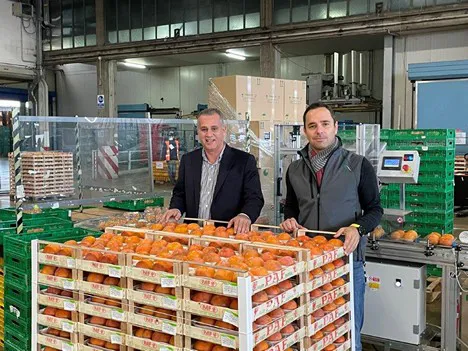 Cristian Moretti and Enrico Bucchi
Cristian Moretti and Enrico Bucchi
FreshPlaza (FP): Agrintesa is a leader on a national level. What is the situation like in the various production areas?
Cristian Moretti (CM): Agrintesa has always been the company of reference when it comes to persimmons. It has been synonymous with care and high-quality since the 1970s with the PAF brand. We can count on approximately 350 hectares distributed on the Emilia-Romagna territory. Persimmons are an important crop for our partners, as they work well with annual plans and complete the range with fruits that are appreciated by the market and of a superior quality. Agrintesa guarantees a high level of service (heat-treatments, grading, sorting by color and ripening level) that is unprecedented. And the market has always rewarded us for this.
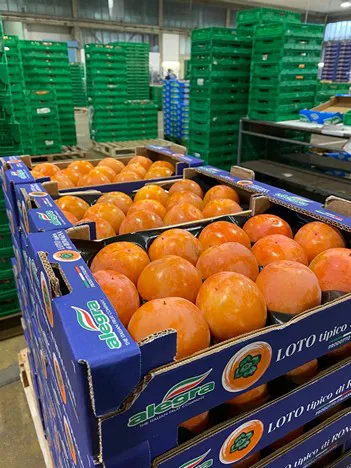 |
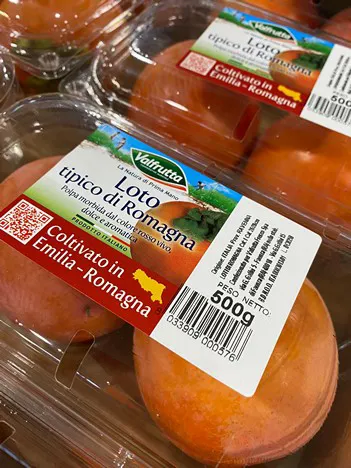 |
FP: What are the differences between Tipo and Rojo brilante persimmons?
CM: This year, the quantity of persimmons is well below the historic average. This is due to the frost in spring, which has caused considerable damages to our partners: while the potential exceeds 7,000 tons, we are expecting a drop in volumes between 30 and 40% in 2021. Rojo Brillante will register more damage as it is more sensitive to the effect of the low temperatures. All of this in a year already characterized by other lacks, especially for pears. I believe, though, that the market will be 'generous' and will enable us to make up for the lower volumes with a higher value.
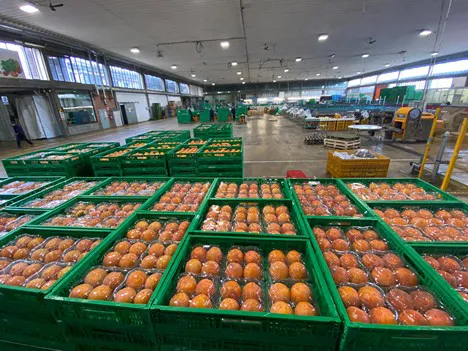
FP: When did harvesting start and when will it end?
Enrico Bucchi (EB): The harvesting of traditional "Loto di Romagna" persimmons has just started and will continue for around 15 days. That of Rojo Brillante, instead, will start next week. The commercial window usually continues until mid-December but, this year, a lot will depend on the volumes available.
FP: How is the domestic market behaving?
EB: Gruppo Alegra is the point of reference for the domestic big retail chain when it comes to persimmons. We guarantee the AxA and AxB service to our customers as well as complete product segmentation: from private labels managed by Alegra to the premium line with Valfrutta Fresco and the organic segment via our associate Brio. We also have a wide range of packaging solutions available, which are increasingly eco-friendly: from punnets containing two fruits with the best grades to 4-fruit trays and single-fruit packs for the organic segment. Prices are rather high, as quotations have reached unprecedented levels. As for the single varieties, demand is always good for Tipo persimmons, while that of Rojo Brillante has increased over the years: this shows how Italian consumers favor the domestic produce rather than the Spanish one.
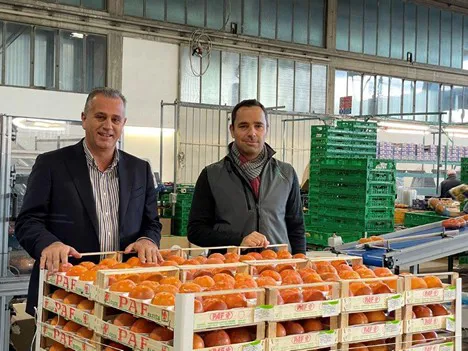
FP: What is the percentage of foreign sales?
EB: Austria and Switzerland have always loved persimmons from Romagna: our products have been available in their markets for years and we are a point of reference for consumers. Overall, around 10% of our persimmons are destined abroad.
FP: It seems the Spanish persimmon campaign will not be brilliant this year... How is the international scene looking?
EB: As for firm-fleshed persimmons, Spain is definitely the market of reference abroad. Domestically, however, there is a definitive preference for the domestic produce and consumers are willing to pay a higher price for it. The situation is different abroad due to the presence of the Spanish produce. Unfortunately, even if the Spanish campaign has not been brilliant, the low availability of Rojo Brillante means not many quantities will be exported.
